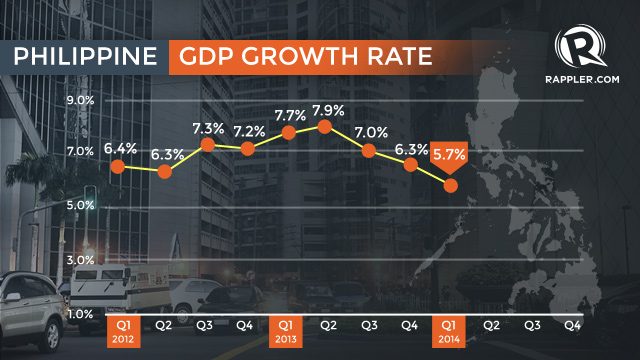SUMMARY
This is AI generated summarization, which may have errors. For context, always refer to the full article.

MANILA, Philippines – While Southeast Asia has a high per capita gross domestic product (GDP) compared to other regions in Asia-Pacific, the countries in the sub-region, including the Philippines, are spending only 2.6% of GDP on average for social protection programs, an Asian Development Bank (ADB) study showed.
Evidence suggests that there is ample room to scale up social protection expenditures in Southeast Asia, according to the ADB Sustainable Development Working Paper Series titled, Measuring Social Protection Expenditures in Southeast Asia: Estimates Using the Social Protection Index, released Monday, July 14.
The study presented cross-country data on social protection programs in 8 countries in Southeast Asia, including the Philippines.
It uses the Social Protection Index (SPI) developed by ADB to help assess the nature and effectiveness of social protection programs and to facilitate cross-country comparisons.
The study said that while there are variations in SPI across the sample countries, the overall results reveal that they are underperforming, and that the middle-income countries, in particular, do not spend much on social protection.
The ADB study covers the countries:
- Singapore (high-income country)
- Malaysia and Thailand (upper-middle income)
- Indonesia, Lao People’s Democratic Republic, Philippines, and Vietnam (lower-middle income)
- Cambodia (low-income)
Social protection resources inadequate
Social protection enables vulnerable groups to prevent, reduce, and/or cope with risks. Social protection covers vulnerable non-poor groups as well as the poor, the study said.
The study further defines social protection as encompassing 3 policy/program subsets: social assistance; social insurance; and labor market programs that actively help people secure jobs through employment services, skills development, and training or special work programs, and passive labor market programs such as unemployment insurance.
The ADB study said that given their levels of per capital income, the social protection resources available in the 8 countries, particularly the middle-income ones, appear “inadequate.”
“Most of these countries could significantly boost their social protection expenditures and strive to attain an SPI of 0.200 over time – the value currently registered by some other Asian countries, such as the Republic of Korea,” the study said.
The countries evaluated in the study have an average SPI of 0.095. In the Philippines, the SPI is 0.085.
Social insurance tends to dominate most of the social protection programs in the sample countries, the ADB study said.
The study said that since social insurance usually serves the interests of the formal workforce, it can pose a problem in countries with a huge informal labor force.
“Moreover, most forms of social insurance, regardless of whether they are related to pensions, health insurance, or other forms of benefits do not succeed in covering a large segment of the non-poor population,” it said.
“While the poor might be able to access social assistance, particularly those schemes framed as poverty reduction programs, many vulnerable non-poor and low-income families receive very little, if any, benefits from either social insurance or social assistance,” it added.
There have been some advances in providing universal health insurance in Indonesia, Thailand, and Viet Nam, the study noted.
However, extending overall social protection to this “missing middle” represents a major challenge for policy makers in Southeast Asia more broadly, the study mentioned.
Social assistance
In middle-income countries such as Indonesia, the Philippines, and Vietnam, and low-income countries such as Cambodia, social assistance can increase income or the purchasing power of households, the study said.
“Low- and middle-income countries need to reduce chronic poverty and build human capital, and social assistance helps achieve these,” the study said.
In the Philippines, the Pantawid Pamilyang Pilipino Program, which provides cash grants to extremely poor households to improve the health, nutrition, and education levels of children aged 0 to 14, was mentioned in the study.
“This poverty reduction and social development program by the government aims to break the intergenerational cycle of poverty through investments in human capital,” the report said. – Rappler.com
Add a comment
How does this make you feel?






![[Vantage Point] My Christmas reflections: Navigating the changing tides of 2023 and moving forward](https://www.rappler.com/tachyon/2023/12/changing-tides-moving-forward-december-24-2023.jpg?resize=257%2C257&crop=399px%2C0px%2C1080px%2C1080px)

![[REFLECTIONS] A light has shone](https://www.rappler.com/tachyon/2023/12/Skepe-Nativity_Scene.jpeg?resize=257%2C257&crop=179px%2C0px%2C877px%2C877px)
![[REFLECTION] Liwanag sa dilim](https://www.rappler.com/tachyon/2023/12/Patnubay-patnubay-9.jpg?resize=257%2C257&crop=218px%2C0px%2C720px%2C720px)
![[Two Pronged] I found out my husband is into ‘golden rain’ during our honeymoon](https://www.rappler.com/tachyon/2024/04/Two-Pronged-peeing-sex.jpg?resize=257%2C257&crop_strategy=attention)
![[Two Pronged] My friend has an abusive partner. What can I do?](https://www.rappler.com/tachyon/2024/04/limits-of-friendships-april-16-2024.jpg?resize=257%2C257&crop=414px%2C0px%2C1080px%2C1080px)
![[Two Pronged] Am I bi-curious? A lesbian? How do I explore these feelings?](https://www.rappler.com/tachyon/2024/04/two-pronged-bisexuality.jpg?resize=257%2C257&crop=283px%2C0px%2C720px%2C720px)
![[Two Pronged] Will watching porn and masturbating affect my future relationships?](https://www.rappler.com/tachyon/2024/03/two-pronged-single-female-30-year-old-virgin-porn.jpg?resize=257%2C257&crop=235px%2C0px%2C720px%2C720px)
![[WATCH] Spoil me but respect me: A sugar baby’s story](https://www.rappler.com/tachyon/2024/03/titlecard-03.jpg?resize=257%2C257&crop_strategy=attention)
There are no comments yet. Add your comment to start the conversation.